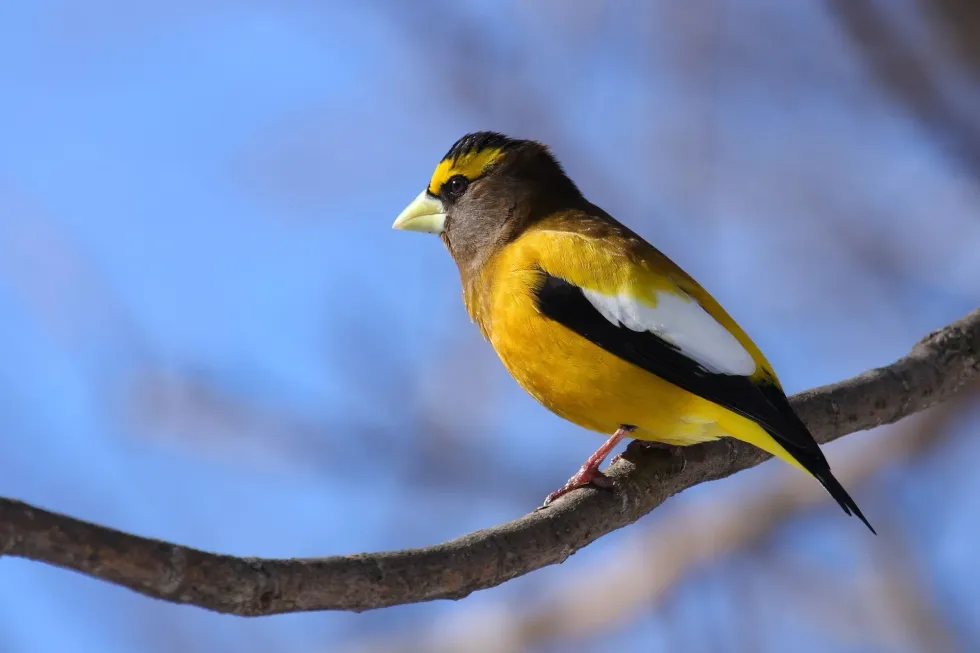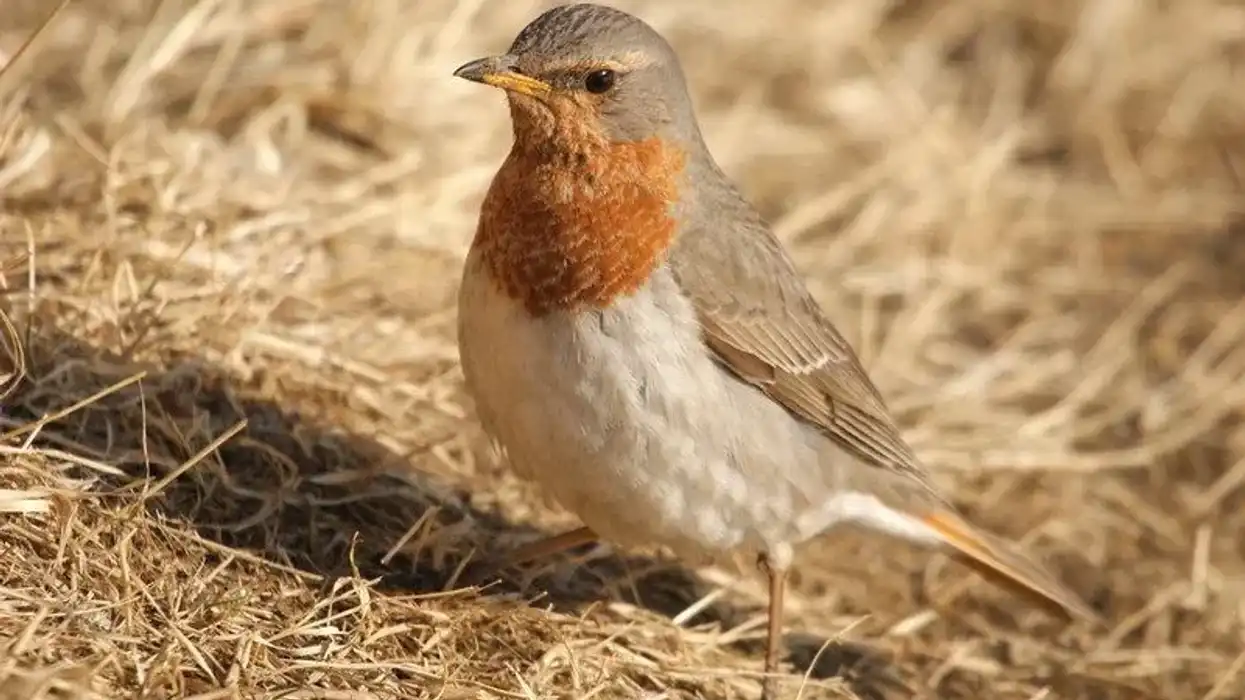Grosbeak (Pheucticus) are slow-moving birds and belong to the order Passeriformes family, careful in their motions. Reviewing these birds of North America is not simple because of five species in this family that are not closely related.
Grosbeaks are slow-moving birds, careful in their motions. Reviewing these birds of North America is not simple because of five species that are not closely related.
The rose-breasted and black-headed are east and west ecological counterparts. The black-headed live throughout the forests of the west. They prefer oak and pine-oak woods, riparian zones, and pinyon-juniper woods.
When the rose-breasted visits my garden feeders in spring, they become my favorite as the male rose-breasted shares incubation responsibilities with the female and even sings while he's performing them. The blue-colored species resembles closely to buntings. It occurs in the southern two-thirds of the U.S., Arizona, and parts of California.
They love brushes, forest edges, hedges, and riparian zones. Evening and pine grosbeaks are categorized as finches. Evening grosbeaks are found in the northern forests of the U.S. and Canada.
If you enjoyed reading about this creature, read about similar birds like blue grosbeak facts and evening grosbeak facts.
Grosbeak Interesting Facts
What type of animal is a grosbeak?
Grosbeak is a type of bird.
What class of animal does a grosbeak belong to?
Grosbeak belongs to the class of Aves (bird), order Passeriformes, family Cardinalidae and genus of the bird may vary according to the type.
How many grosbeaks are there in the world?
Grosbeak is approximately 4.1 million in the world.
Where does a grosbeak live?
Grosbeak lives in moist deciduous and deciduous-coniferous forests, thickets, and semiopen habitats.
What is a grosbeak's habitat?
Grosbeaks are seen in a variety of woodland habitats that includes swamps and wet forests along rivers and streams. They prefer to live in mixed and deciduous forests with an open space, such as second-growth habitats. They avoid dry grasslands.
Who do grosbeaks live with?
Most grosbeak species feed in groups of 5 - 15 birds. Birds with the same song type stay together. They do not hunt with other groups showing, unlike flight calls. They form pairs during the breeding season.
Males sing to protect their upbringing territory from above the canopies. Mated pairs have the same kind of flight calls. This indicates that they form sturdy bonds with each other.
How long does a grosbeak live?
The lifespan may vary according to different species of grosbeak. The maximum lifespan documented for a wild rose-breasted grosbeak is 12 years, 11 months. If kept in captivity, they have been recorded to live up to 24 years of age, making them long-living passerines.
How do they reproduce?
The time at which grosbeaks breed may vary according to species. Grosbeaks are seriously committed and form pairs that last during the breeding season. Adult male birds have a tendency to arrive a few days before females.
The male and female pair formation occurs on the breeding grounds. The breeding season occurs from mid-May to July.
Both male and female birds participate in selecting and building the nest. It is usually built on a tree branch by using fallen leaves, twigs, rootlets, or hair. The grosbeaks breed and female lay clutches from one to five eggs.
The color of eggs is usually pale blue to green eggs having purplish to red spots. Nurturing lasts from 11 - 14 days and is done by both male and female birds.
Baby grosbeaks are hatched helpless, with their eyes closed. They weigh around 5 g (0.18 oz). They are ready to fly at 9 - 13 days of age and are independent of their parents after about three weeks.
What is their conservation status?
According to IUCN, they are counted as the Least Concern species of birds as they are widely distributed. Fat pink beaks are common forest birds, but their populations saw a slow decline from 1966-2015, resulting in a cumulative loss of about 35% over that time, according to the North American Breeding Bird Survey.
Millions, with 46% spending part of the year in the United States, 21% in Mexico, and 54% in Canada. The species achieved 11 out of 20 points in the Continental Concern Score.
Grosbeak Fun Facts
What do grosbeaks look like?
Appearances of grosbeaks changes according to species. These birds have large dark horn-colored beaks. Their feet and eyes are shady. Adult males have a blackhead, wings, back, tail, and a shiny red patch on their breast during breeding plumage for the rose-breasted grosbeak. Evening grosbeak is yellow, black, and white, while the pine grosbeak is pink.
How cute are they?
Adorable is the best word to describe all species of grosbeak. Rose-breasted grosbeaks, in particular, are very cute because the male rose-breasted grosbeak has a red-colored triangle shape on its breast which looks very beautiful. Also, they have a lovely and mesmerizing voice that attracts the female species during the breeding season.
How do they communicate?
Like most birds, grosbeak communicates vocally. Birds, like rose-breasted grosbeak, are known for their lovely, melodic song. Males sing to advertise breeding territories, up to 689 songs in a day. Females may also sing when they are building nests.
Other calls used include a sharp 'chink' contact call and various squawks, chuks, and hurrrs. Young first make sounds at six days after hatching and young males sing their first songs at about 30 days old. Songs seem to be learned.
How big is a grosbeak?
Sizes vary according to grosbeak species in this family and location. The length and height of a rose-breasted grosbeak is 18-22 cm (7-8.6 in) and 20-24 cm (7.8-9.4 in) respectively.
World's smallest bird known as bee hummingbird's length is 5 – 6.1 cm(1.9-2.4 in). That shows that the rose-breasted grosbeak is three to four times bigger than the bee hummingbird.
How fast can a grosbeak fly?
Since black-headed grosbeak are migratory in nature, they are efficient flyers. There are no studies accurately estimating grosbeak speed.
How much does a grosbeak weigh?
The average weight of grosbeak is between 1.2-2.3 oz (35-65 g). There is not much weight difference between males and females.
What are the male and female names of the species?
The adult female and male names of the species are not different. Both adult males and females can be differentiated by plumage.
What would you call a baby grosbeak?
The baby of this species is called a chick.
What do they eat?
Grosbeaks are omnivorous and hence black, brown, and white finches descend upon bird feeders in winters in search of sunflower seeds, berries, fruits, blossoms and flowers, and sometimes insects and nectar.
Are they dangerous?
No, grosbeaks are not dangerous.
Would they make a good pet?
The rose-breasted grosbeak is a favorite bird among the Mexican population, Central and South America. The local populations are fond of them and often capture them to take in pets.
Did you know...
Black-headed grosbeak nest on tree branches and some nests have been recorded at 16.7 m (54.8 ft) off the ground; the average height is usually 6 m (20 ft) high.
Different types of grosbeak
These are the following types of grosbeak: rose-breasted and black-headed grosbeak, evening grosbeak, blue grosbeak, and yellow grosbeak, hawfinch, pine grosbeak, spot winged grosbeak, Japanese grosbeak, and many more.
How did the grosbeak get its name?
The name grosbeak is taken from the French word 'gros-bec', which means 'big beak'. The rose-breasted grosbeak is named after the triangular rose-colored marking on their breasts while the evening grosbeak gets their name because of the songs they sing in the evening.
You can read amazing evening grosbeak facts and blue grosbeak facts on our website to know more about their origin.
Here at Kidadl, we have carefully created lots of interesting family-friendly animal facts for everyone to discover! For more relatable content, check out these tody facts and lark bird facts pages.
You can even occupy yourself at home by coloring in one of our free printable grosbeak coloring pages.










